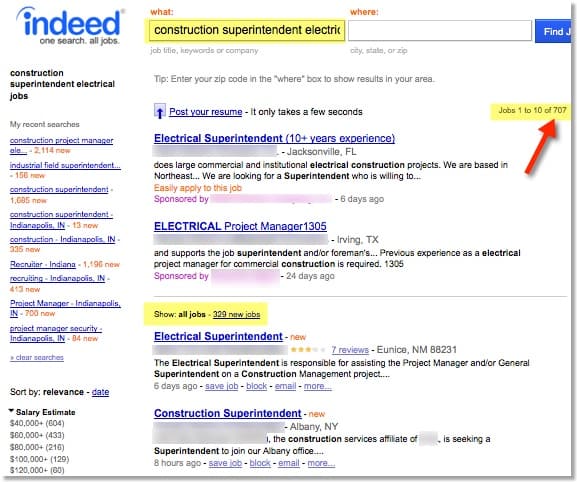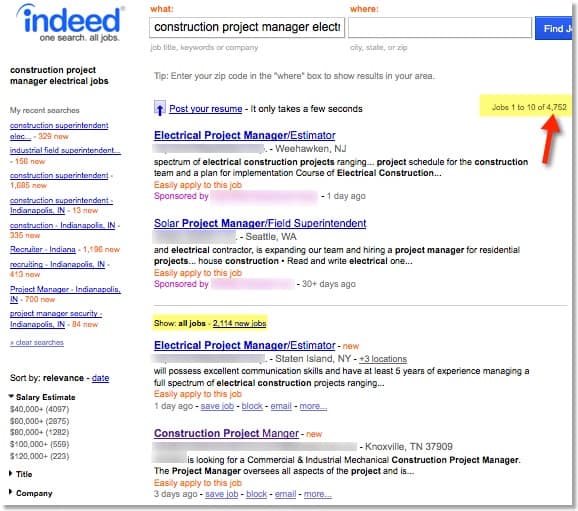Tips for High Volume Hiring
Organizations pursuing high-volume hiring propel job creation and fuel economic growth. Unfortunately, filling high-volume requisitions isn’t for the faint of heart.
When you’re dealing with mass hiring, you need creative and practical ways to complete it. Talent is one of the most coveted assets, and organizations succeed only when they have the right skills and talent in the pipeline.
What is High-Volume Hiring?
High-volume hiring refers to the practice of filling a high-number open requisitions within a short timeframe. High-volume hiring seeks to fill many available job positions within a limited time.
Organizations and sectors that use high-volume hiring face seasonal hiring periods and experience massive organizational growth or shifts. For instance, a construction company may conduct a mass-hiring exercise to find construction workers for an unusually large project. If that same company specializes in an area like road repair that is impacted by climate, they may hire hundreds for the spring and summer months, but wind hiring down in the fall.
High Volume Hiring Challenges
The Covid-19 pandemic had far-reaching implications on individuals, families, and organizations. Businesses sustained job losses, mass resignations, and supply chain disruptions. They are still finding it hard to identify, train and keep new hires–not to mention their struggle to keep mass hiring initiatives organized.
So obviously, high volume hiring is a challenge at a time of mass resignation with employees are quitting jobs at record highs. HR managers must respond to these dynamic shifts with creativity and agility in attracting, hiring, and retaining talent that’s in high demand.
And with mounting pressure, industries that rely on mass hiring are getting more creative by the day. For instance, TikTok is maximizing video resumes, with companies such as Chipotle, Great Clips, Target, and Shopify trying out TikTok to fill entry-level positions.
Other common challenges for dealing with mass hiring include:
- Time crunch. It takes a lot of time to place an ad and to officially onboard the first group of new hires. Where possible, look to automate common, repetitive tasks.
- Interview process overload. Successful high-volume recruitments rely heavily on efficient application screening. Software can help hiring managers quickly focus on the best qualified applicants, while also supporting DEI initiatives.
- Analysis paralysis. High volume application processes need to be strategically conducted and executed to manage stress and anxiety. This means having a screening plan in place before recruiting begins.
- Providing a positive candidate experience. It’s easy to focus on getting the job positions filled, but don’t forget about the people behind the job applications. Provide positive feedback and highlight benefits and positive experiences to new hires.
Strategies for High Volume Hiring
Let’s discuss tips for high-volume hiring. These tips will help you navigate the existing challenge of mass resignations and help you identify, attract, and retain high-demand employees facing high turnover rates.
1.) Alignment with hiring managers
Misalignment is the source of all problems in recruitment and onboarding exercises. The slightest disconnect with the hiring team can cause major problems in the recruitment process. Ensure that you’re on good terms with all the hiring managers before going far in the hiring process.
You can use the following three tips to ensure internal alignment with hiring managers:
- Identifying overarching key performance goals
- Identify different tasks that support or complement each performance goal
- Identify the skills and proficiencies that will help the hire succeed in their work
By identifying the relevant skills needed to succeed in a certain position, you enable new hires to develop feedback mechanisms and understand and respond to customer needs.
2.) Put quality first
When you have a pile of requisitions, it doesn’t mean you need more candidates. It means you need quality new hires to get the job done. One way to get quality candidates is to write job descriptions that match the people you want to hire.
Your job description will appeal to the caliber of people you want to hire. Quality job descriptions will clarify the values and attitudes needed for the job and appeal to the right candidates for an open requisition.
You can use the following tips to craft a job description that targets the best candidates:
- Tell job stories. Tell your candidates why the position is the ideal place to work based on a job story that transcends the job description.
- Communicate your culture. Clearly state the values and characteristics defining your company’s culture and describe how you view and reward success.
- Emphasize and impact. Every job candidate has this question in mind, “what’s in it for me?” when they skim dozens of job postings. Most candidates are looking for something intangible – something rewarding and satisfying and worth their time and effort. So, ensure that your job description stipulates the rewards and benefits, tangible and intangible, that come with the job position.
For instance, LinkedIn job postings encourage quality applicants. LinkedIn postings give candidates a personalized window that clarifies the open position and helps them decide whether it’s right for them.
3.) Create a ‘candidate-first application’ process
Research by Indeed found that 42% of applicants find lengthy job postings intimidating. They found long applications as the most frustrating parts of the application process.
So, while Snapchat’s snaplication model may seem impractical at first glance, it presents a creative and unique opportunity for creating mobile-first and super-speedy applications. Mobile phones and mobile apps will help organizations deploy a candidate-first application process.
Some of the best practices for candidate-first application include:
- Talent intelligence. Always be where your applicants are – TikTok, LinkedIn, Facebook, or Twitter; surround yourself with potential candidates and hires. Talent intelligence drills down on candidates based on geography or location.
- Mobile-optimization. Ensure that your job application process is mobile-optimized. According to Indeed, more than 50% of job applicants use their mobile phones to navigate job postings.
Using and optimizing mobile phones is especially significant to hourly workers who don’t have access to desktop computers. So, ensure that your application process supports a pipeline of potential candidates who may not necessarily have the means or access to application materials or devices.
- Keep it short. Create a one-click application process and reduce candidate friction. If this model doesn’t work for you, keep the application questions to a minimum. Enable candidates to apply using their social profiles and pre-populate text boxes to avoid lengthy applications.
Focusing exclusively on job candidates helps you fill open positions faster, saving you time and money on resume screening processes.
4.) Expand your reach
Now that you’ve created crafty job descriptions and targeted quality candidates, it’s time to put your job posting in front of as many eyes as possible. The more people you reach, the higher the likelihood that you’ll receive more quality applications.
Some of the tactics you can use to amplify the reach of your job postings include:
- Encourage current employees to share postings with their network and add personal touches
- Give people something creative and compelling to talk (and share) about by adding images and video
- Consider sponsoring job posts through job boards, or boosting your social posts
Tip: It’s crucial to keep an eye on who comments, shares, or likes your job postings on social and say thank you. Expressing gratitude may go a long way in attracting the pipeline of potential candidates and new hires.
5.) Speed up with talent rediscovery
Talent rediscovery involves digging and searching your resume databases to find relevant but old applications.
A prime concern for employers is recruiters failing to examine their resume databases. However, this complaint is slowly being phased out now that Applicant Tracking Systems (ATS) have internal search functionality.
ATS technology is useful in today’s volatile labor market. Most organizations are channeling their focus toward rebuilding internal talent and re-skilling in response with an unpredictable labor market. Talent intelligence provides visibility, enhancing your understanding of your workforce’s skillset requirements.
6.) Automate candidate screening
Perhaps the most unique and innovative way of dealing with mass hiring is the automation of candidate screening. Research shows that 75% of resumes collected from high-volume job postings are considered unqualified. Organizations without an ATS spend time and money screening applications instead of focusing on the bottom line.
A manual, hands-on approach to mass hiring wastes countless hours in skimming unqualified paperwork and documentation. Screening dozens of applications can be mind-numbing for HR teams, but recruiting software can help you stay organized with high volume hiring and give you back time to focus on other key areas.
Contact ExactHire to stay organized when dealing with mass hiring–consider using our ATS software, or let us do the hard work of filling your candidate pipeline, so you can focus on final hiring decisions and onboarding new hires.




